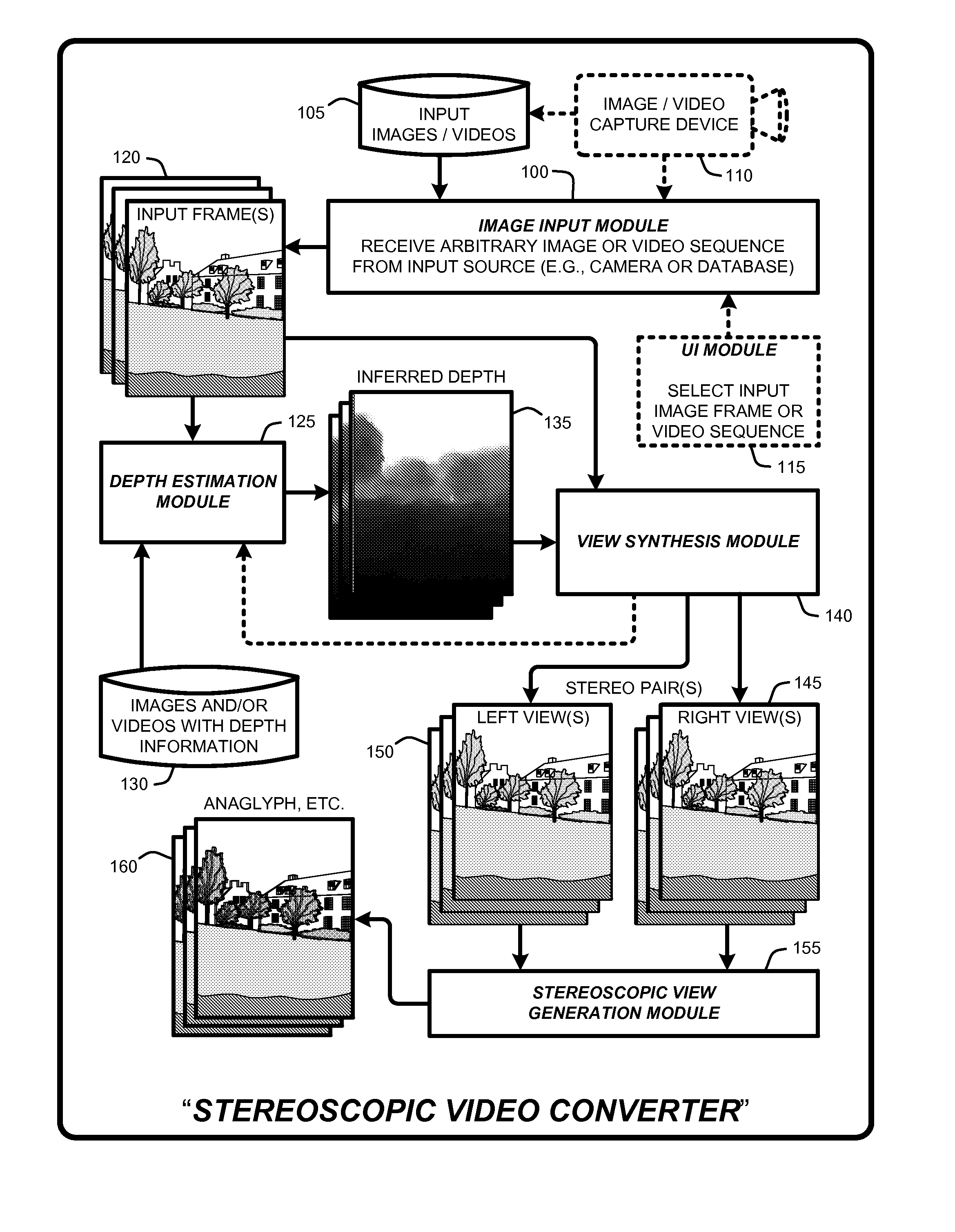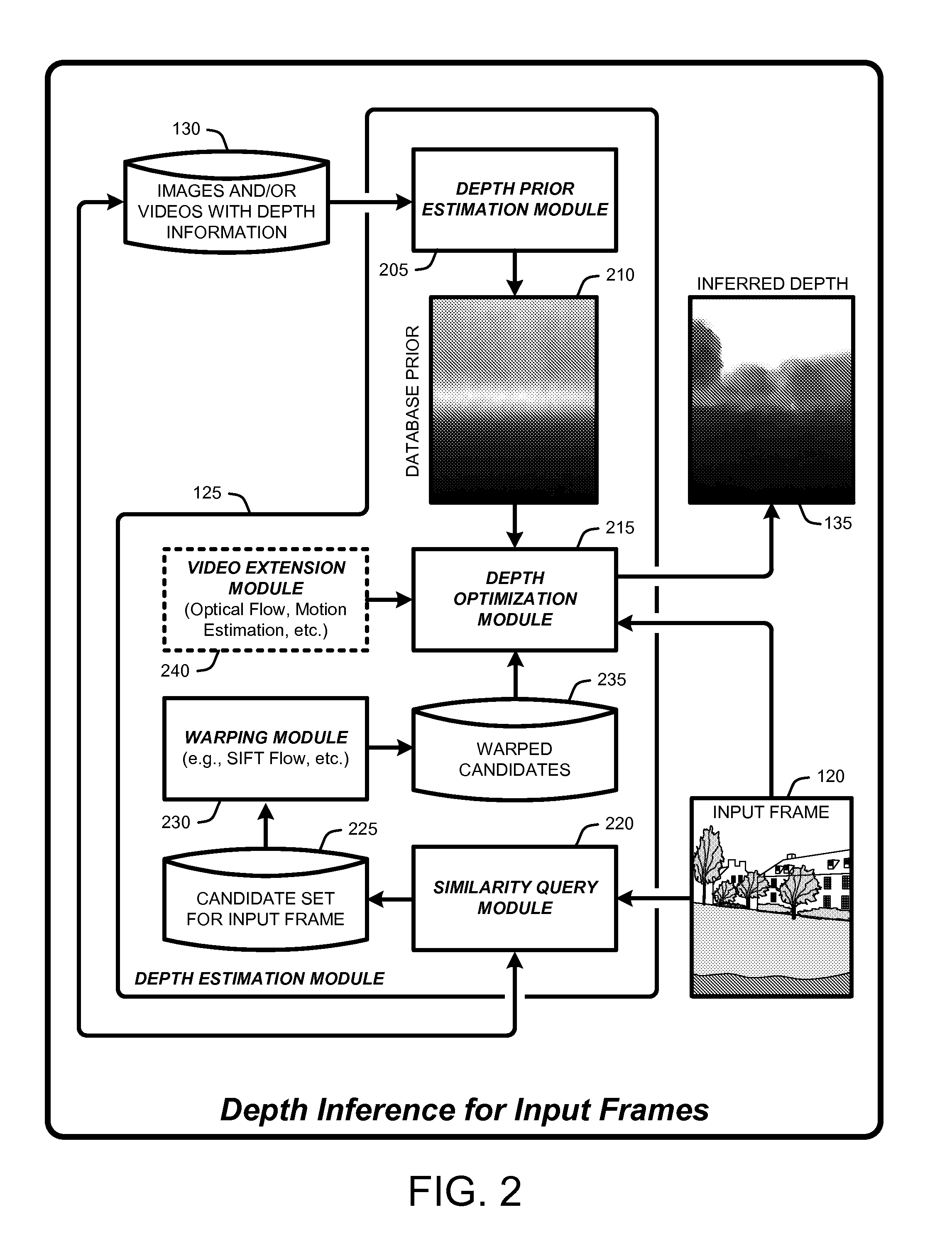Automatic 2d-to-stereoscopic video conversion
a technology of stereoscopic video and video conversion, applied in the field of stereoscopic video conversion, can solve the problems of requiring some assumptions, prone to tracking failure, and generally not enough to know scene depth
- Summary
- Abstract
- Description
- Claims
- Application Information
AI Technical Summary
Benefits of technology
Problems solved by technology
Method used
Image
Examples
Embodiment Construction
[0025]In the following description of the embodiments of the claimed subject matter, reference is made to the accompanying drawings, which form a part hereof, and in which is shown by way of illustration specific embodiments in which the claimed subject matter may be practiced. It should be understood that other embodiments may be utilized and structural changes may be made without departing from the scope of the presently claimed subject matter.
[0026]1.0 Introduction:
[0027]In general, a “Stereoscopic Video Converter,” as described herein, provides various techniques for automatically converting arbitrary 2D video sequences into perceptually plausible stereoscopic or 3D versions based on estimations of dense depth maps for every frame of the video sequence. The Stereoscopic Video Converter (SVC) operates to automatically synthesize a stereo video sequence from a monoscopic video. Advantageously, and in contrast to existing processes, the SVC provides a video conversion solution that...
PUM
 Login to View More
Login to View More Abstract
Description
Claims
Application Information
 Login to View More
Login to View More - R&D
- Intellectual Property
- Life Sciences
- Materials
- Tech Scout
- Unparalleled Data Quality
- Higher Quality Content
- 60% Fewer Hallucinations
Browse by: Latest US Patents, China's latest patents, Technical Efficacy Thesaurus, Application Domain, Technology Topic, Popular Technical Reports.
© 2025 PatSnap. All rights reserved.Legal|Privacy policy|Modern Slavery Act Transparency Statement|Sitemap|About US| Contact US: help@patsnap.com



